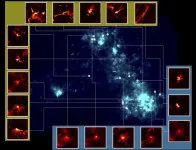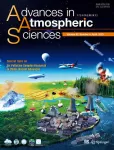Deep Nanometry reveals hidden nanoparticles
Deep learning-based analysis enables detection of disease-related nanoparticles
2025-02-20
(Press-News.org)
Researchers including those from the University of Tokyo developed Deep Nanometry, an analytical technique combining advanced optical equipment with a noise removal algorithm based on unsupervised deep learning. Deep Nanometry can analyze nanoparticles in medical samples at high speed, making it possible to accurately detect even trace amounts of rare particles. This has proven its potential for detecting extracellular vesicles indicating early signs of colon cancer, and it is hoped that it can be applied to other medical and industrial fields.
Did you know your body is full of microscopic particles smaller than cells? These include what are known as extracellular vesicles (EVs) which can be useful in early disease detection and also in drug delivery. However, EVs are very rare, and finding them among millions of other particles required time consuming and expensive pre-enrichment process. This has prompted researchers, including postdoctoral researcher Yuichiro Iwamoto from the Research Center for Advanced Science and Technology and his team, to find a means to detect EVs quickly and reliably.
“Conventional measurement techniques often have limited throughput, making it difficult to reliably detect rare particles in a short space of time,” said Iwamoto. “To address this, we developed Deep Nanometry (DNM), a new nanoparticle detection device and an unsupervised deep learning noise-reduction method to boost its sensitivity. This allows for high throughput, making it possible to detect rare particles such as EVs.”
At the heart of DNM is its ability to detect particles as small as 30 nanometers (billionths of a meter) in size, while also being able to detect more than 100,000 particles per second. With conventional high-speed detection tools, strong signals are detected but weak signals may be missed, while DNM is capable of catching them. This might be analogous to searching for a small boat on a turbulent ocean amidst crashing waves — it becomes much easier if the waves would dissipate leaving a calm ocean to scout for the boat. The artificial intelligence (AI) component helps in this regard, by learning the characteristics of, and thus helping filter out, the behavior of the waves.
This technology can be expanded to a wide range of clinical diagnoses that rely on particle detection, and it also has potential in fields such as vaccine development and environmental monitoring. Additionally, the AI-based signal denoising could be applied to electrical signals, amongst others.
“The development of DNM has been a very personal journey for me,” said Iwamoto. “It is not only a scientific advancement, but also a tribute to my late mother, who inspired me to research the early detection of cancer. Our dream is to make life-saving diagnostics faster and more accessible to everyone."
###
Journal article: Yuichiro Iwamoto, Benjamin Salmon, Yusuke Yoshioka, Ryosuke Kojima, Alexander Krull and Sadao Ota, “High throughput analysis of rare nanoparticles with deep-enhanced sensitivity via unsupervised denoising”, Nature Communications, DOI: 10.1038/s41467-025-56812-y
Funding and acknowledgments:
This work was supported by JST CREST grant number JPMJCR19H1 (S.O.), JST A-STEP Grant Number JPMJTR23UB (S.O.), Japan, JST GteX grant number JPMJGX23B1 (S.O.) and Nakatani Foundation for Advancement of Measuring Technologies in Biomedical Engineering (S.O.).
Useful links:
Ota Lab - https://www.sadaotalab.net/
RCAST - https://www.rcast.u-tokyo.ac.jp/en/
The Institute of Medical Science - https://www.ims.u-tokyo.ac.jp/imsut/en/index.html
Research contact:
Yuichiro Iwamoto
Research Center for Advanced Science and Technology, The University of Tokyo,
4-6-1 Komaba, Meguro-ku, Tokyo 153-8904, Japan
yu-iwamoto@g.ecc.u-tokyo.ac.jp
Press contact:
Mr. Rohan Mehra
Public Relations Group, The University of Tokyo,
7-3-1 Hongo, Bunkyo-ku, Tokyo, 113-8654, Japan
press-releases.adm@gs.mail.u-tokyo.ac.jp
About The University of Tokyo:
The University of Tokyo is Japan's leading university and one of the world's top research universities. The vast research output of some 6,000 researchers is published in the world's top journals across the arts and sciences. Our vibrant student body of around 15,000 undergraduate and 15,000 graduate students includes over 4,000 international students. Find out more at www.u-tokyo.ac.jp/en/ or follow us on X (formerly Twitter) at @UTokyo_News_en.
END
ELSE PRESS RELEASES FROM THIS DATE:
2025-02-20
Toronto, ON - Preteens who spend more time on screens are more likely to develop manic symptoms years two-years later, according to a new study published in Social Psychiatry and Psychiatric Epidemiology.
The findings reveal that 10- to 11-year-olds who engage heavily with social media, video games, texting, and videos show a greater risk of symptoms such as inflated self-esteem, decreased need for sleep, distractibility, rapid speech, racing thoughts, and impulsivity — behaviors characteristic of manic episodes, a key feature of bipolar-spectrum disorders.
“Adolescence is a particularly ...
2025-02-20
Fukuoka, Japan—How are stars born, and has it always been this way?
Stars form in regions of space known as stellar nurseries, where high concentrations of gas and dust coalesce to form a baby star. Also called molecular clouds, these regions of space can be massive, spanning hundreds of light-years and forming thousands of stars. And while we know much about the life cycle of a star thanks to advances in technology and observational tools, precise details remain obscure. For example, did stars form this way in the early universe?
Publishing in The Astrophysical Journal, researchers from Kyushu University, in collaboration with Osaka Metropolitan ...
2025-02-20
Blood pressure drug could be a safer alternative for treating ADHD symptoms, finds study
Repurposing amlodipine, a commonly used blood pressure medicine, could help manage attention-deficit/ hyperactivity disorder (ADHD) symptoms, according to an international study involving the University of Surrey.
In a study published in Neuropsychopharmacology, researchers tested five potential drugs in rats bred to exhibit ADHD-like symptoms. Among them, only amlodipine, a common blood pressure medication, significantly reduced hyperactivity.
To ...
2025-02-20
WASHINGTON (Feb. 20, 2025)--A new study analyzes the disease burden and the risk factors for severity among people who suffer from a condition called cannabinoid hyperemesis syndrome. Researchers at the George Washington University say the condition occurs in people who are long-term regular consumers of cannabis and causes nausea, uncontrollable vomiting and excruciating pain in a cyclical pattern that often leads to repeated trips to the hospital.
“This is one of the first large studies to examine the burden of disease associated with this cannabis-linked syndrome,” says Andrew Meltzer, professor of emergency medicine ...
2025-02-20
Cardiac arrhythmias affect millions across the world and are responsible for a fifth of all deaths in the Netherlands. Currently there are multiple treatment options, ranging from life-long medication to invasive surgical procedures. Research from Amsterdam UMC and Johns Hopkins University, published today in the European Heart Journal, sets another important step in the hunt for a one-off gene therapy that could improve heart function and protect against arrhythmias.
"Arrhythmias often occur due to slowing of conduction of the electrical impulse through the heart. Rapid impulse conduction is needed for ...
2025-02-20
With less annual rainfall than 1 mm per year, Chile’s Atacama Desert is one of the driest places in the world. The main water source of cities in the region are underground rock layers that contain water-filled pore spaces which last recharged between 17,000 and 10,000 years ago.
Now, local researchers have assessed if ‘fog harvesting,’ a method where fog water is collected and saved, is a feasible way to provide the residents of informal settlements with much needed water.
“This research represents a notable shift in the ...
2025-02-20
Oxysterols are a class of molecules derived from cholesterol via oxidation or as byproducts of cholesterol synthesis. Despite their relatively low concentration within our bodies, oxysterols are known to play many important biological roles, acting as transcriptional regulators, precursors for bile acid, and key players in brain development.
On the flip side, some pathologies are associated with imbalances in oxysterols. In particular, 25-hydroxycholesterol (25-OHC) has been shown to contribute to arteriosclerosis, cancer development, central nervous system ...
2025-02-20
Growing plants can be a joyous, yet frustrating process as plants require a delicate balance of nutrients, sun, and water to be productive.
Phosphorus and nitrogen, which are essential for plant growth, are often supplemented by chemical fertilizers to assure proper balance and output of produce. However, the amount of these nutrients on the planet is increasing due to excessive use, which in turn is causing various environmental problems. For this reason, there is a growing movement to promote sustainable agriculture through the recycling of phosphorus and nitrogen. In Japan, a target has been ...
2025-02-20
Studying the social behavior of animals in their natural environments is necessary for advancing our understanding of neurological processes. To achieve this, tracking multiple individuals simultaneously and accurately as they interact in shared spaces is crucial. Traditional multi-animal tracking systems, such as multi-animal DeepLabCut (maDLC) and Social LEAP Estimates Animal Poses (SLEAP), use frame-by-frame identification to predict movements without the need for markers. While these tools effectively track poses, such as head direction, in simple scenarios, ...
2025-02-20
Air pollution is a global environmental problem with serious impacts on human health, climate change, and ecological systems. In China, rapid development in the last several decades has led to a drastic increase in coal consumption and the number of vehicles. As a result, air pollution in China is complicated by the coexistence of high concentrations of primary and secondary trace gases and aerosol particles from multiple sources.
Air pollution complex is a term used to characterize the formation mechanisms of air pollution, and was first proposed by Professor Xiaoyan Tang in 1997. A better understanding of these complex mechanisms is critical for meeting the urgent societal ...
LAST 30 PRESS RELEASES:
[Press-News.org] Deep Nanometry reveals hidden nanoparticles
Deep learning-based analysis enables detection of disease-related nanoparticles




